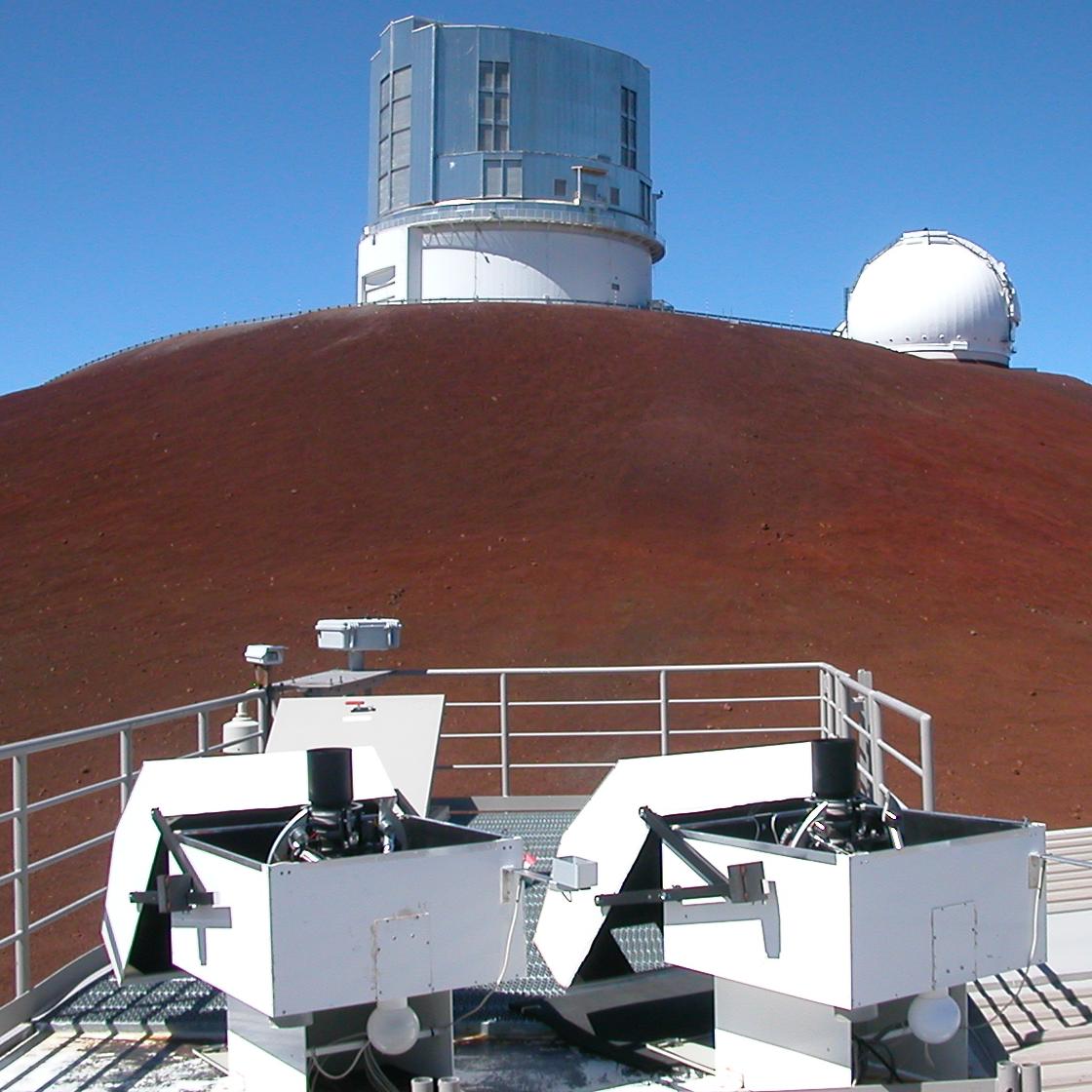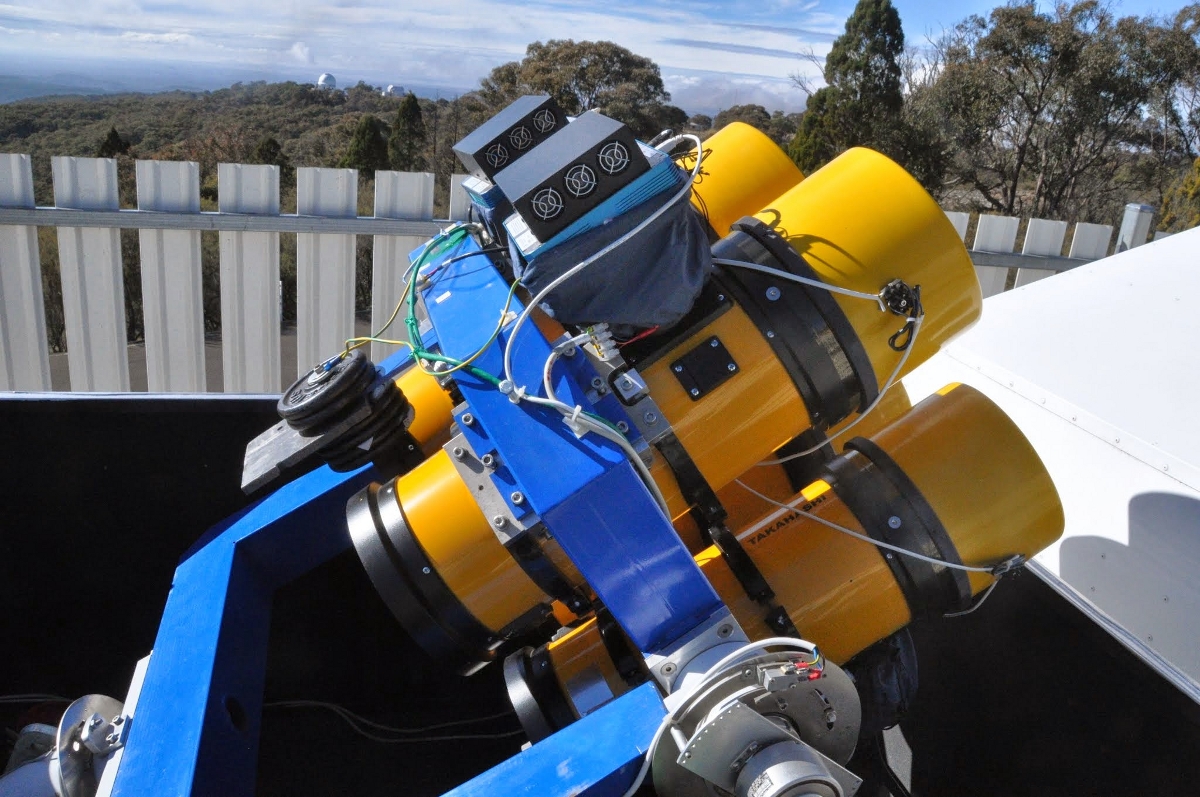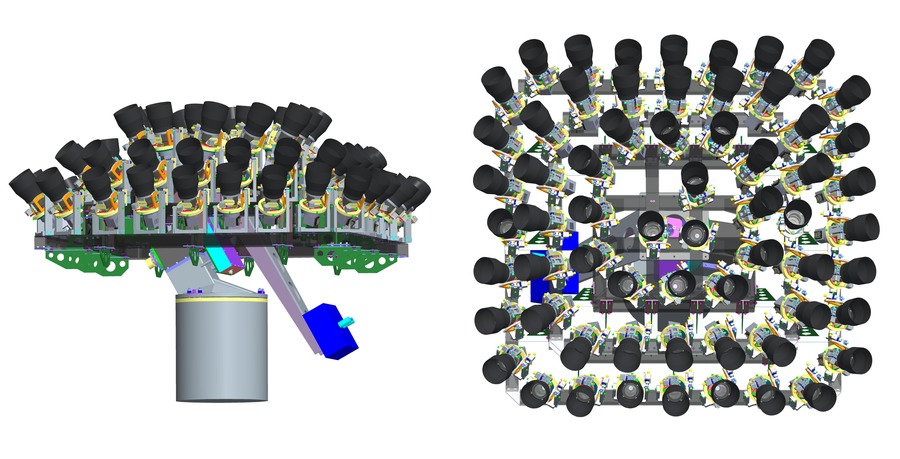Scientific Projects
The HATNet Project
The Hungarian-made Automated Telescope Network (HATNet) Exoplanet Survey is a geographically distributed network of 7 small telescopes optimized for detecting transiting exoplanets. Since first light in 2003, we have discovered more than 60 exoplanets to date. All HATNet mount and electronics are made and designed by Fornax Mounts.

HATSouth Project
The Hungarian-made Automated Telescope Network-South (HATSouth) Exoplanet Survey is a network of 6 astrograph telescope systems designed to detect transiting exoplanets in orbit around relatively bright stars visible from the Southern hemisphere. The telescopes are distributed over three continents; South America, Africa, and Australia. Since first light in 2009, we have discovered more than 70 exoplanets to date. All HatSouth mounts and electronics are made and designed by Fornax Mounts.

HAT Pi
The HAT-PI Project is building a telescope that will, in a single exposure, observe the majority of the night sky visible from its observing site in Chile in 30 seconds. This is accomplished by attaching up to 63 carefully aligned lens-and-camera sub-units to a large mount. The mount will track stars as they rise and set during the night while the telescope keeps imaging, effectively creating a movie of the night-sky. HAT-PI will enable the detection of a diverse array of objects ranging from near-earth asteroids and exoplanets around bright stars to novae and bright gamma-ray bursts. The large field of view of this instrument, coupled with the dense time-sampling, will vastly improve our understanding of transient astronomical events.
The Principal Investigator for the project is Gáspár Bakos, Associate Professor in the Department of Astrophysical Sciences at Princeton University.
HATpi official website

The BlackGem Project
The BlackGEM project is a wide-field telescope array dedicated to measure the optical emission from pairs of merging neutron stars and black holes. A few hours prior to the optical emission, these violent events should also emit copious amounts of gravitational radiation in the form of gravitational waves — ripples in the fabric of space-time itself. BlackGEM is expected to be operational by the end of 2017. In addition, the BlackGEM telescope will for the first time construct a multicolored movie of the dynamic and variable Southern skies! BlackGEM will comprise 15 telescopes of 60cm diameter, all of which will most likely be located at ESO La Silla, Chile. Each telescope will be equiped with a 81 Mpix camera, consisting of a single 10k x 10k CCD, and covering 2.7 square degrees at 0.57 ”/pix. The new FORNAX 200 Mount will be used for the BlackGem project. The BlackGEM project is a wide-field telescope array dedicated to measure the optical emission from pairs of merging neutron stars and black holes. A few hours prior to the optical emission, these violent events should also emit copious amounts of gravitational radiation in the form of gravitational waves — ripples in the fabric of space-time itself. BlackGEM is expected to be operational by the end of 2017.
